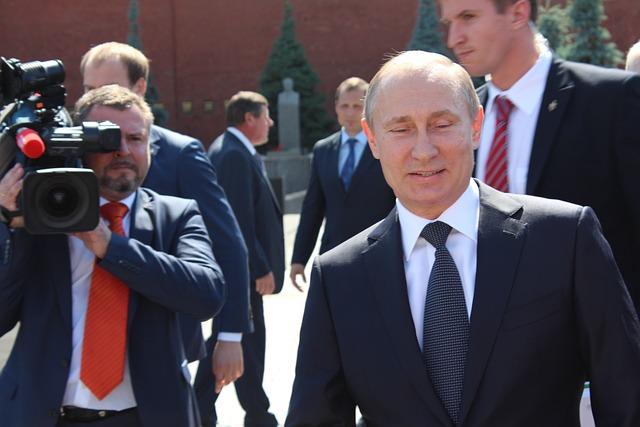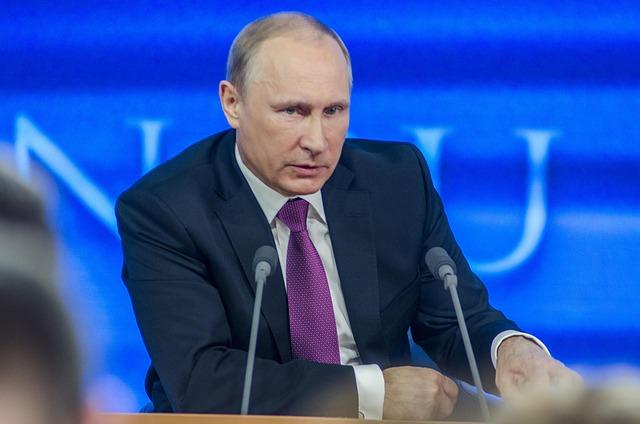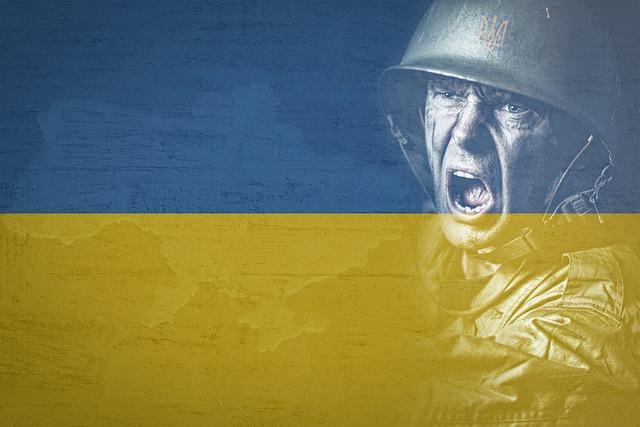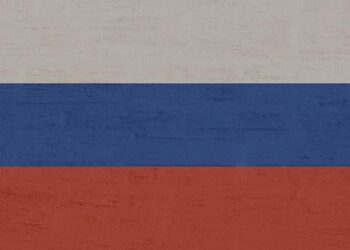In a meaningful advancement in the ongoing conflict between Russia and Ukraine, President Vladimir Putin has outlined a series of conditions for a potential ceasefire, signaling a notable shift in the Kremlin’s approach to negotiations. In recent statements, Putin emphasized the need for Ukraine to acknowledge territorial changes and demonstrate a commitment to lasting peace. This proclamation comes against a backdrop of escalating tensions and widespread international concern over the humanitarian consequences of the war. As both sides navigate the complexities of diplomacy and military strategy,experts are analyzing the implications of Putin’s conditions and what they could mean for the future of the region. this article delves into the details of Putin’s proposals, the responses from Ukrainian officials, and the broader geopolitical context surrounding this critical moment.
Vladimir Putins Strategic Rationale for Ceasefire Conditions
Vladimir Putin’s conditions for a ceasefire in Ukraine reflect a calculated approach to consolidate power while addressing perceived security threats. By outlining specific terms such as the recognition of territorial boundaries and demilitarization agreements, he aims to cement Russia’s influence over contested regions while portraying himself as a peace-maker in the eyes of both domestic and international audiences. This strategy serves to strengthen his political standing at home,where narratives of national security and sovereignty resonate deeply.
The conditions also signal an intention to exploit potential divisions within the West regarding support for Ukraine. As economic strains increase and public opinion shifts, Putin’s proposal presents an opportunity for some countries to reconsider their positions, possibly leading to weakened support for Kyiv. By imposing terms that are unlikely to be accepted by Ukraine, he could aim to prolong engagement, allowing Russia to redefine its military objectives while testing NATO’s resolve. This dynamic could fundamentally reshape the geopolitical landscape, presenting a complex challenge for Western policymakers.

Key Proposals: Analyzing the Terms Outlined by the Russian Leader
In his recent address, the Russian leader outlined several key conditions essential for achieving a ceasefire with Ukraine. These proposals aim to address security concerns, territorial integrity, and long-standing grievances between the two nations. Among the highlighted terms were:
- Recognition of Territorial Claims: Russia insists that Ukraine acknowledge Crimea as part of its territory.
- Neutral Status: A demand for Ukraine to maintain a neutral stance and refrain from joining NATO.
- Autonomy for Eastern Regions: Calls for greater autonomy for the eastern regions of Ukraine, especially Donetsk and Luhansk.
additionally, the proposals suggest a complete dialog process involving international mediators to facilitate the negotiations. The Russian leader emphasized the necessity of a “demilitarized zone” along the current front lines, aiming to reduce military presence and prevent further escalations. The possible implementation of international peacekeeping forces to oversee compliance with the ceasefire has also been mentioned as a crucial element to ensure stability:
| Proposal Element | Details |
|---|---|
| Security Guarantees | International assurances for Ukraine’s sovereignty. |
| Humanitarian Aid Access | Safe corridors for aid to affected areas. |
| Economic Cooperation | Future economic partnerships to bolster regions affected by the conflict. |

International Reactions: Global responses to Putins Ceasefire Framework
Reactions from around the globe have poured in following Vladimir Putin’s announcement of a ceasefire framework regarding the ongoing conflict in Ukraine. Western governments seem skeptical of the proposal, viewing it as a possible tactical maneuver rather then a genuine effort toward peace. The United States, as an example, reiterated its support for Ukraine, emphasizing that any ceasefire must prioritize the sovereignty and territorial integrity of the nation. At the same time, European leaders are calling for a unified response, urging both sides to engage in meaningful dialogue. Countries such as Germany and France have stressed the importance of an inclusive negotiation process that involves not just the warring factions, but also international stakeholders to ensure long-term stability in the region.
Conversely,reactions from Russia’s allies have largely been supportive,with nations like China and India endorsing the ceasefire proposal as a step toward de-escalation. These countries are advocating for diplomatic solutions, highlighting the need to address the humanitarian crisis resulting from the violence. Several non-aligned nations have echoed similar sentiments, expressing a desire for peaceful resolutions that respect both national interests and human rights.Moreover, international organizations, such as the United Nations, are calling for integrated humanitarian corridors to facilitate aid delivery, underscoring the urgent need for international cooperation amidst the turmoil.

Implications for Future Peace Talks: What This Means for Ukraine
The recent announcement from Vladimir Putin outlining specific conditions for a ceasefire could possibly reshape the landscape of future peace negotiations surrounding Ukraine. As both sides brace for the implications of this new stance, key factors will determine the efficacy of any proposed solutions. These factors may include:
- Security Guarantees: The level of assurance that all parties will prioritize the safety of civilians and territorial integrity will be crucial.
- International Involvement: The role of third-party nations or organizations in facilitating discussions could either bolster or hinder progress.
- Economic Considerations: Addressing economic reparations and support for reconstruction will be vital in reaching a sustainable agreement.
Moreover, the specific conditions set forth by Putin highlight the entrenched positions that may complicate dialogue. Experts suggest that for any meaningful engagement to take place, there must be a willingness for compromise on both sides. The following hurdles may need to be addressed:
- Mutual Recognition: Both parties may need to acknowledge past grievances while forging a path forward.
- Control of Territories: Disputes regarding territorial claims could escalate tensions if not handled delicately.
- Public Sentiment: The views of citizens in Ukraine and Russia will play a pivotal role in shaping the negotiations.

Recommendations for Diplomatic Engagement and Conflict Resolution
Amidst the complex landscape of the ongoing conflict,strategic diplomatic initiatives are crucial for fostering dialogue and mitigating tensions between the involved parties.in light of recent proposals from various stakeholders, it is essential to emphasize constructive engagement. Key actions could include:
- Establishing neutral mediation channels to facilitate discussions between Ukraine and Russia, allowing both sides to express their positions without bias.
- Encouraging third-party involvement from nations or international organizations respected by both parties,which could enhance credibility in the negotiation process.
- Implementing confidence-building measures, such as ceasefire zones and humanitarian aid corridors, to demonstrate goodwill and restore trust.
Along with immediate dialogues, long-term strategies should focus on addressing the root causes of the conflict. This includes promoting economic cooperation and stability in the region. Implementing the following strategic initiatives may prove beneficial:
| Initiative | Description |
|---|---|
| Joint Economic Projects | Facilitating cross-border investments in infrastructure to create mutual dependencies. |
| Cultural Exchange Programs | Encouraging people-to-people connections to foster understanding and reduce hostility. |
| Environmental Collaborations | Partnering on regional ecological issues that impact both countries,promoting cooperative conflict resolution. |

Assessing the Humanitarian Impact of the Proposed Ceasefire Terms
Evaluating the potential humanitarian consequences of the ceasefire terms proposed by President Vladimir Putin reveals a complex interplay of immediate relief and long-term challenges. Among the key considerations are the safety of civilians, access to essential services, and the protection of humanitarian aid workers. Recognizing that millions of Ukrainians have been displaced due to the ongoing conflict, the framework for the ceasefire needs to prioritize their security and ensure that humanitarian corridors are functional and protected. Without robust provisions addressing these issues, the ceasefire could inadvertently exacerbate existing vulnerabilities, leaving countless individuals without the support they urgently need.
Moreover, as the likelihood of an extended ceasefire hinges on trust-building measures, it is crucial to establish monitoring mechanisms and ensure openness in the implementation process. An effective ceasefire agreement must include stipulations that facilitate unrestricted access for aid organizations to deliver food, medical supplies, and shelter. To illustrate the varying impacts of the proposed terms, the table below outlines potential humanitarian outcomes tied to different conditions of the ceasefire:
| Ceasefire Condition | Humanitarian Impact |
|---|---|
| Immediate troop withdrawal | Increased civilian safety and potential for aid access |
| establishment of no-fly zones | Protection of humanitarian operations and reduced fatalities |
| Guarantee of aid access | Improved living conditions for displaced populations |

Insights and Conclusions
President Vladimir putin’s recent declaration outlining the prerequisites for a ceasefire in Ukraine marks a significant development in the ongoing conflict. His conditions not only reflect the complexities of the geopolitical landscape but also highlight the challenges that lie ahead for diplomatic negotiations. As the international community closely monitors these unfolding events, the need for sustained dialogue and mutual understanding becomes increasingly urgent. The prospects for lasting peace hinge on the willingness of both sides to engage constructively and address the underlying issues at the core of this prolonged crisis. As the situation evolves, the world watches with bated breath, hoping for a resolution that prioritizes stability and reconciliation in the region.
















